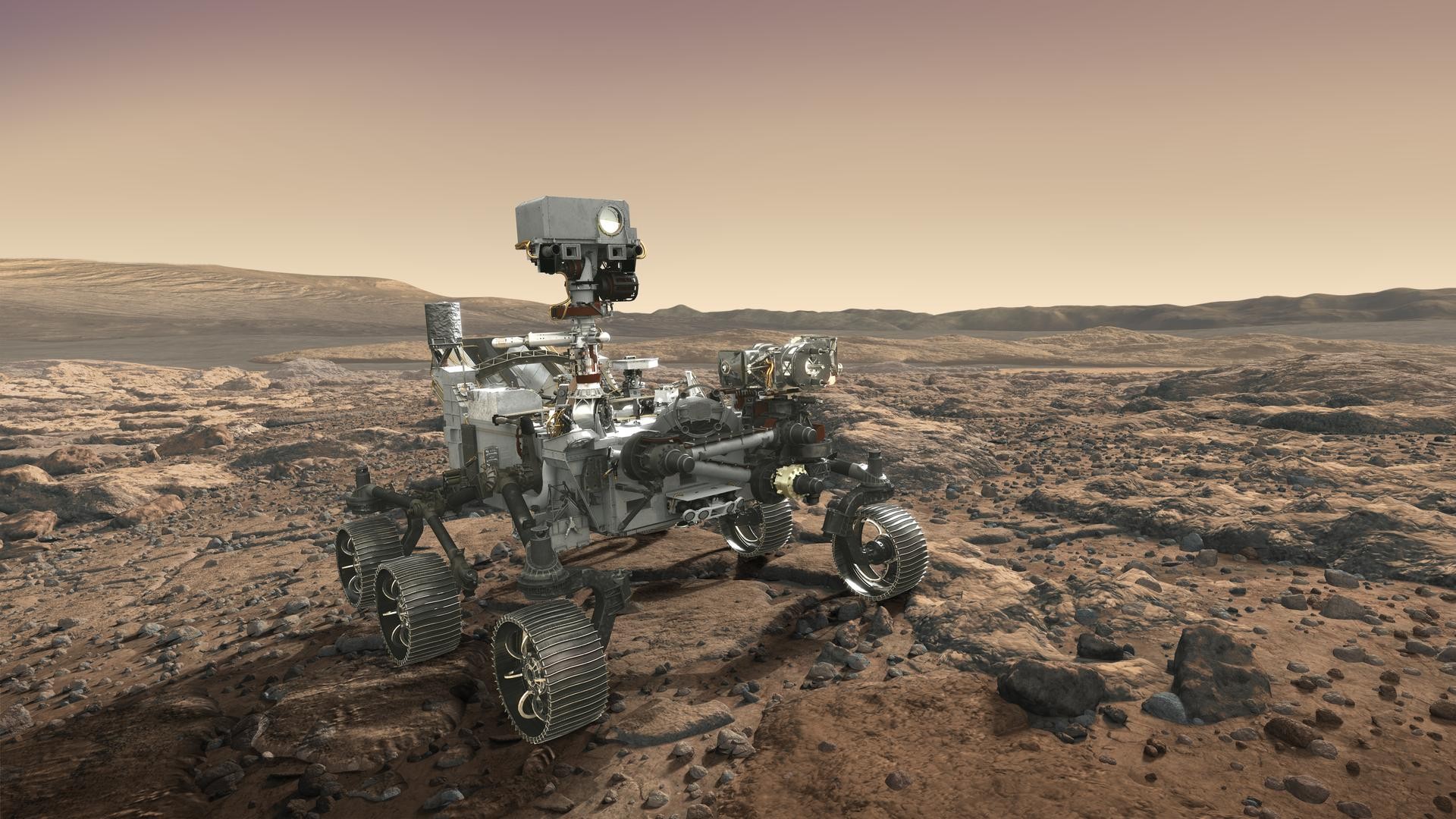Detecting life on Mars may be 'impossible' with current NASA rovers, new study warns
Research in Chile's Atacama Desert suggests that the science instruments on the Red Planet aren't capable of detecting signs of long-dead microbial life.

The current generation of Mars rovers may have trouble confirming any signs of ancient life on the Red Planet because their scientific instruments aren't up to snuff, according to research published Feb. 21 in the journal Nature Communications.
In the study, researchers conducted tests on sedimentary rocks in the Red Stone region of Chile's Atacama Desert, one of the oldest and driest deserts on Earth and a geological analog to ancient sites on Mars that two NASA rovers are currently exploring. The same team of researchers previously discovered that Red Stone's clays are inhabited by a previously unknown mix of ancient and modern microorganisms dubbed the "dark microbiome."
Using four instruments that are on current or upcoming Mars rovers, the team studied samples from Red Stone and found them incapable of detecting organic material. Only genetic sequencing, a procedure that can be done only in a laboratory on Earth, was capable of finding evidence of microbial life in the samples — but even then, it was barely detectable.
Any ancient organic material and microorganisms that exist in the Martian rock record could therefore be "hard, if not impossible" to detect in their current locations with existing technology, the researchers concluded. The new research stresses that, other than sending more advanced rovers to the Red Planet, the only way to prove unequivocal signs of life on Mars is to send samples back to Earth for DNA analysis.
"The chance of obtaining false negatives in the search for life on Mars highlights the need for more powerful tools," lead study author Armando Azua-Bustos, a research scientist at the Center of Astrobiology (CAB) in Madrid, said in a statement.
So, scientists can either develop more sensitive and complex instrumentation for Mars rovers, or bring samples back to Earth. Each option comes with risks and benefits, the authors added.
"You need to decide whether it's more advantageous having limited capability for analysis on the surface of Mars to interrogate a wide variety of samples or having limited samples to be analyzed with the wide variety of state-of-the-art instrumentation on Earth," study co-lead author Alberto G. Fairén, a planetary scientist and astrobiologist at Cornell University, said in the statement.
Get the world’s most fascinating discoveries delivered straight to your inbox.
There are currently three rovers on Mars. NASA's Curiosity rover landed in Mars' Gale Crater in 2012 and recently found its best evidence yet for water and waves on the Red Planet. Since 2021, NASA's Perseverance rover has been exploring an ancient river delta at Jezero Crater for signs of ancient microbial life in the rock record. The rover is currently preparing samples that will be collected by a spacecraft and returned to Earth for in-depth analysis, though the challenging mission is still in its early stages.
In May 2021, Curiosity and Perseverance were joined by China's Zhurong rover, which landed in the Utopia Planitia plain and quickly found evidence of water. However, that rover isn't searching for signs of ancient life.
Meanwhile, the European Space Agency plans to launch its delayed ExoMars mission in 2028 to land its Rosalind Franklin rover in the clay-bearing plain of Oxia Planum.
“This European rover will carry a drill with the unprecedented capability of reaching down to a depth of 2 meters (6.5 feet) to analyze sediments better protected against the harsh conditions on the Martian surface," Fairén said. "If biosignatures are better preserved at depth, which we expect, there will be more abundance and diversity, and better preservation of biosignatures, in those deep samples."

Jamie Carter is a freelance journalist and regular Live Science contributor based in Cardiff, U.K. He is the author of A Stargazing Program For Beginners and lectures on astronomy and the natural world. Jamie regularly writes for Space.com, TechRadar.com, Forbes Science, BBC Wildlife magazine and Scientific American, and many others. He edits WhenIsTheNextEclipse.com.



